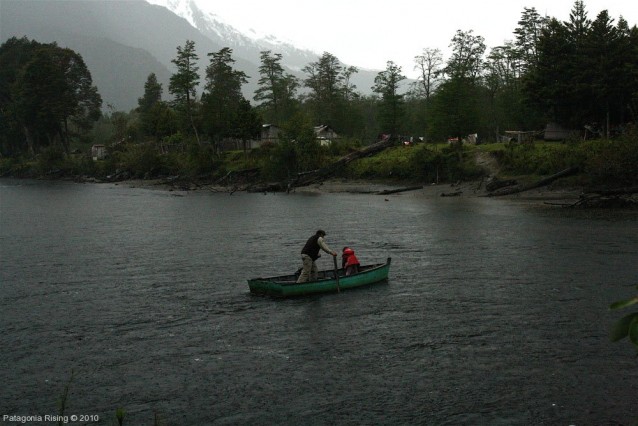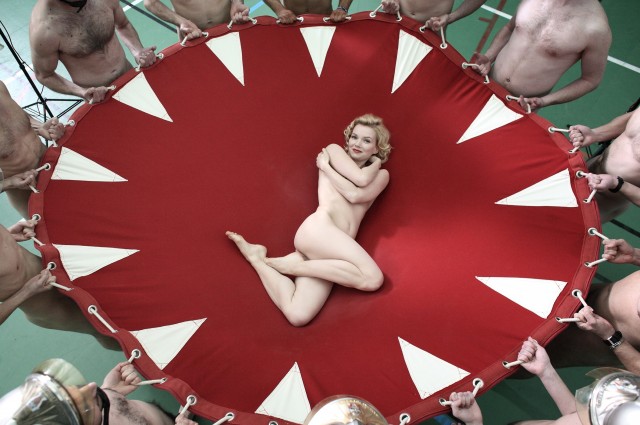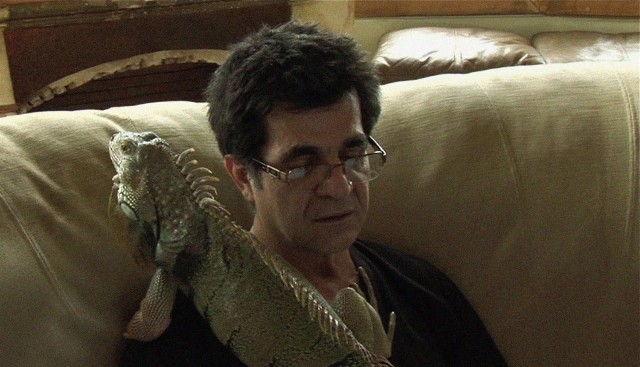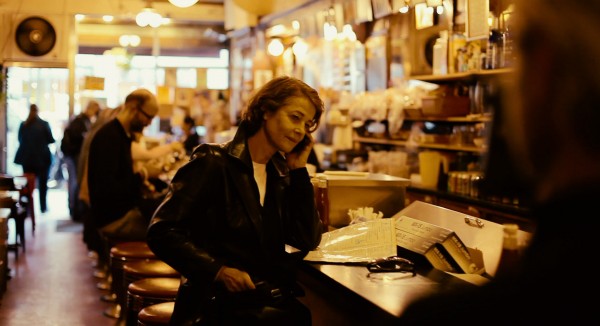Patagonia Rising (Brian Lilla, 2011)
Cinema Village
22 East 12th St. between University Pl. & Fifth Ave.
Opens Friday, June 8
212-924-3363
www.cinemavillage.com
patagoniarising.com
 For generations, gauchos have been roaming through southern Chile, living off the land along the Baker and Pascua Rivers. But the lifestyle of these South American cowboys, as well as their surrounding environment, is being threatened by the potential construction of five dams along the two rivers. In Patagonia Rising, filmmaker Brian Lilla examines the hard-fought battle currently going on between the ranchers and farmers and hidroAysén, the global corporation behind the massive project. Lilla (Tale of Two Bondage Models, Ghetto Fabulous) speaks to such families as the Sanchezes, the Sandovals, and the Arratias, whose livelihoods and culture are being threatened; glaciologists who point out the environmental damage the dams can cause, especially given the climate change that is wreaking havoc in Patagonia; a hidroAysén general manager who explains that the project will bring much-needed energy resources to Chile while also being environmentally sound and sustainable; and other scientific experts and activists, as well as a few gauchos who are in favor of the dams. Patagonia Rising features beautiful shots of the region, but they are carefully situated to play on viewers’ sympathies in a mostly one-sided documentary earnestly narrated with a lack of authority by Carla Wilkins. The film comes off as a sounding board for the anti-dam movement, but it still raises important points about the future of the area and the possibility of developing alternative energy sources that would be more friendly to the land and its inhabitants.
For generations, gauchos have been roaming through southern Chile, living off the land along the Baker and Pascua Rivers. But the lifestyle of these South American cowboys, as well as their surrounding environment, is being threatened by the potential construction of five dams along the two rivers. In Patagonia Rising, filmmaker Brian Lilla examines the hard-fought battle currently going on between the ranchers and farmers and hidroAysén, the global corporation behind the massive project. Lilla (Tale of Two Bondage Models, Ghetto Fabulous) speaks to such families as the Sanchezes, the Sandovals, and the Arratias, whose livelihoods and culture are being threatened; glaciologists who point out the environmental damage the dams can cause, especially given the climate change that is wreaking havoc in Patagonia; a hidroAysén general manager who explains that the project will bring much-needed energy resources to Chile while also being environmentally sound and sustainable; and other scientific experts and activists, as well as a few gauchos who are in favor of the dams. Patagonia Rising features beautiful shots of the region, but they are carefully situated to play on viewers’ sympathies in a mostly one-sided documentary earnestly narrated with a lack of authority by Carla Wilkins. The film comes off as a sounding board for the anti-dam movement, but it still raises important points about the future of the area and the possibility of developing alternative energy sources that would be more friendly to the land and its inhabitants.


 After returning to his childhood vacation town of Mouthe, the coldest village in France, only to be told that his recently deceased uncle left him a stuffed dog instead of his eight-hectare vineyard, crime novelist David Rousseau (Jean-Paul Rouve), who is suffering from writer’s block, suddenly comes upon an idea for his next book. He decides to investigate the surprise suicide of Mouthe’s beloved favorite daughter, Candice Lecouer (Sophie Quinton), a beautiful young blonde who was the face of the town’s leading export, Belle de Jura cheese. Against the firm advice of Brigadier Bruno Leloup (Guillaume Gouix) and Commandant Colbert (Olivier Rabourdin) of the local police, Rousseau snoops into Candice’s past, which he quickly discovers is eerily reminiscent of the life and death of her hero, Norma Jean Baker / Marilyn Monroe. As he gets closer to the truth, however, he finds that playing detective is a lot more dangerous than he imagined. Writer-director Gérald Hustache-Mathieu (April in Love) has fashioned a thrilling modern noir with Nobody Else But You, a gorgeously shot tale of lust, pride, ambition, self-doubt, and obsession, with more than a hint of the surreal and liberal splashes of wry humor. Hustache-Mathieu brings the dead Candice back to life through flashbacks as well as voice-overs not only of her reading from her diaries but narrating from beyond the grave. The film sparkles whenever Quinton is onscreen, the actress casting an enchanting glow that rivals the almost blindingly white snowy landscapes of Mouthe, with expert cinematography courtesy of Pierre Cottereau that evokes the Coen brothers’ Fargo. The fourth collaboration between the radiant Quinton and Hustache-Mathieu, Nobody Else But You, which also boasts an eclectic soundtrack and compelling original score by Stéphane Lopez — and whose English and French (Poupoupidou) titles are both taken from the lyrics of Monroe’s famous song “I Wanna Be Loved by You” — is a rousing good mystery with an engaging balance of the lurid and the erotic.
After returning to his childhood vacation town of Mouthe, the coldest village in France, only to be told that his recently deceased uncle left him a stuffed dog instead of his eight-hectare vineyard, crime novelist David Rousseau (Jean-Paul Rouve), who is suffering from writer’s block, suddenly comes upon an idea for his next book. He decides to investigate the surprise suicide of Mouthe’s beloved favorite daughter, Candice Lecouer (Sophie Quinton), a beautiful young blonde who was the face of the town’s leading export, Belle de Jura cheese. Against the firm advice of Brigadier Bruno Leloup (Guillaume Gouix) and Commandant Colbert (Olivier Rabourdin) of the local police, Rousseau snoops into Candice’s past, which he quickly discovers is eerily reminiscent of the life and death of her hero, Norma Jean Baker / Marilyn Monroe. As he gets closer to the truth, however, he finds that playing detective is a lot more dangerous than he imagined. Writer-director Gérald Hustache-Mathieu (April in Love) has fashioned a thrilling modern noir with Nobody Else But You, a gorgeously shot tale of lust, pride, ambition, self-doubt, and obsession, with more than a hint of the surreal and liberal splashes of wry humor. Hustache-Mathieu brings the dead Candice back to life through flashbacks as well as voice-overs not only of her reading from her diaries but narrating from beyond the grave. The film sparkles whenever Quinton is onscreen, the actress casting an enchanting glow that rivals the almost blindingly white snowy landscapes of Mouthe, with expert cinematography courtesy of Pierre Cottereau that evokes the Coen brothers’ Fargo. The fourth collaboration between the radiant Quinton and Hustache-Mathieu, Nobody Else But You, which also boasts an eclectic soundtrack and compelling original score by Stéphane Lopez — and whose English and French (Poupoupidou) titles are both taken from the lyrics of Monroe’s famous song “I Wanna Be Loved by You” — is a rousing good mystery with an engaging balance of the lurid and the erotic.
 “You call this a film?” Jafar Panahi asks rhetorically about halfway through the revealing documentary This Is Not a Film. After several arrests beginning in July 2009 for supporting the opposition party, the highly influential and respected Iranian filmmaker (Crimson Gold, Offside) was convicted in December 2010 for “assembly and colluding with the intention to commit crimes against the country’s national security and propaganda against the Islamic Republic.” Although facing a six-year prison sentence and twenty-year ban on making or writing any kind of movie, Panahi is a born storyteller, so he can’t stop himself, no matter the risks. Under house arrest, Panahi has his friend, fellow director Mojtaba Mirtahmasb (Lady of the Roses), film him with a handheld DV camera over ten days as Panahi plans out his next movie, speaks with his lawyer, lets his pet iguana climb over him, and is asked to watch a neighbor’s dog, taking viewers “behind the scenes of Iranian filmmakers not making films.” Panahi even pulls out his iPhone to take additional video, photographing New Year’s fireworks that sound suspiciously like a military attack. Panahi is calm throughout, never panicking (although he clearly does not want to take care of the barking dog) and not complaining about his situation, which becomes especially poignant as he watches news reports on the earthquake and tsunami disaster in Japan. “But you can’t make a film now anyhow, can you?” Mirtahmasb — who will later be arrested and imprisoned as well — asks at one point. “So what I can’t make a film?” Panahi responds. “That means I ask you to take a film of me? Do you think it will turn into some major work of art?” This Is Not a Film, which was smuggled out of Iran in a USB drive hidden in a birthday cake so it could be shown at Cannes, is indeed a major work of art, an important document of government repression of free speech as well as a fascinating examination of one man’s intense dedication to his art and the creative process. (After playing for two weeks at Film Forum, This Is Not a Film has moved to Cinema Village, where it opens March 16.)
“You call this a film?” Jafar Panahi asks rhetorically about halfway through the revealing documentary This Is Not a Film. After several arrests beginning in July 2009 for supporting the opposition party, the highly influential and respected Iranian filmmaker (Crimson Gold, Offside) was convicted in December 2010 for “assembly and colluding with the intention to commit crimes against the country’s national security and propaganda against the Islamic Republic.” Although facing a six-year prison sentence and twenty-year ban on making or writing any kind of movie, Panahi is a born storyteller, so he can’t stop himself, no matter the risks. Under house arrest, Panahi has his friend, fellow director Mojtaba Mirtahmasb (Lady of the Roses), film him with a handheld DV camera over ten days as Panahi plans out his next movie, speaks with his lawyer, lets his pet iguana climb over him, and is asked to watch a neighbor’s dog, taking viewers “behind the scenes of Iranian filmmakers not making films.” Panahi even pulls out his iPhone to take additional video, photographing New Year’s fireworks that sound suspiciously like a military attack. Panahi is calm throughout, never panicking (although he clearly does not want to take care of the barking dog) and not complaining about his situation, which becomes especially poignant as he watches news reports on the earthquake and tsunami disaster in Japan. “But you can’t make a film now anyhow, can you?” Mirtahmasb — who will later be arrested and imprisoned as well — asks at one point. “So what I can’t make a film?” Panahi responds. “That means I ask you to take a film of me? Do you think it will turn into some major work of art?” This Is Not a Film, which was smuggled out of Iran in a USB drive hidden in a birthday cake so it could be shown at Cannes, is indeed a major work of art, an important document of government repression of free speech as well as a fascinating examination of one man’s intense dedication to his art and the creative process. (After playing for two weeks at Film Forum, This Is Not a Film has moved to Cinema Village, where it opens March 16.)
